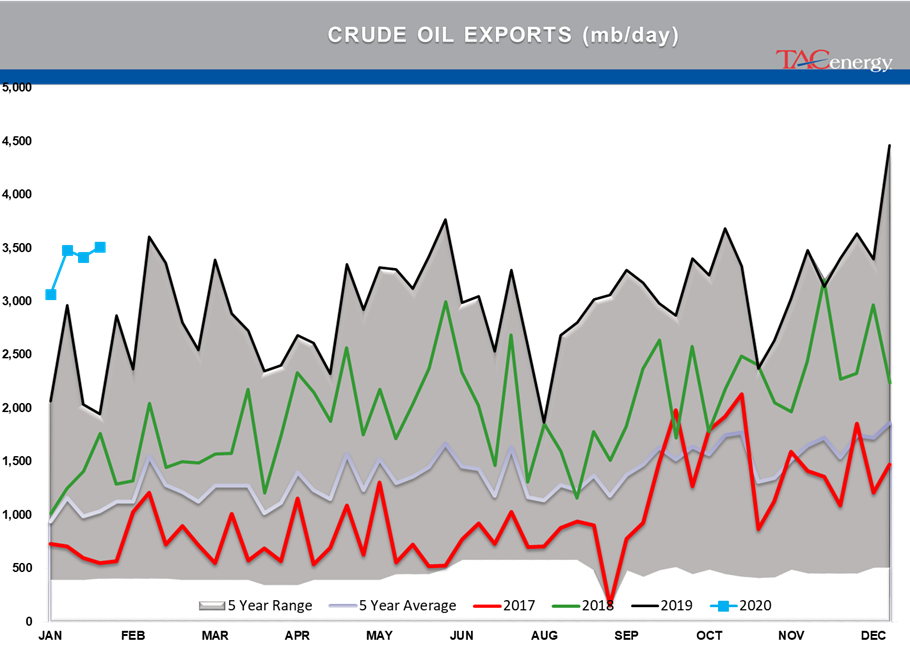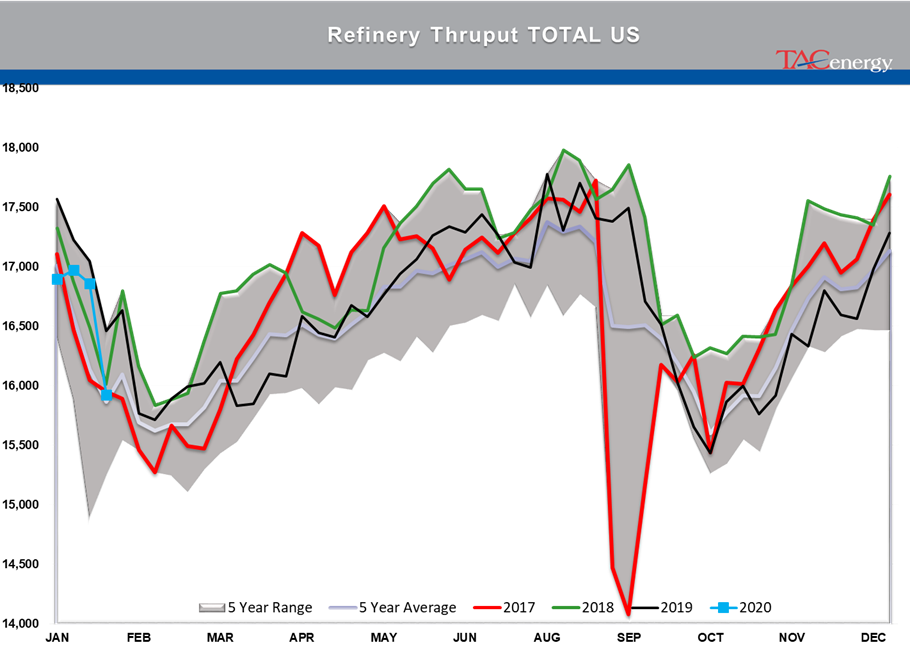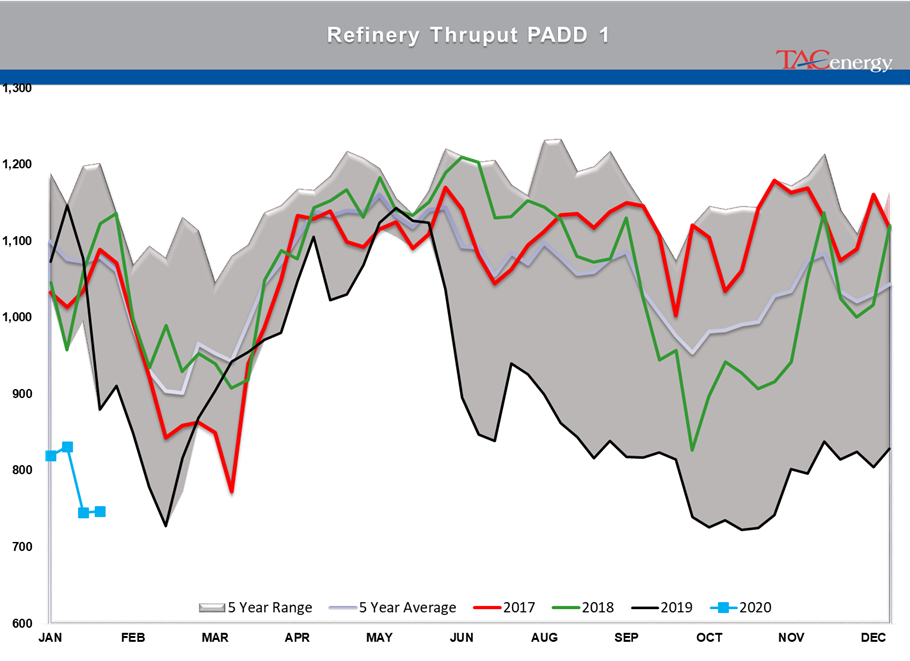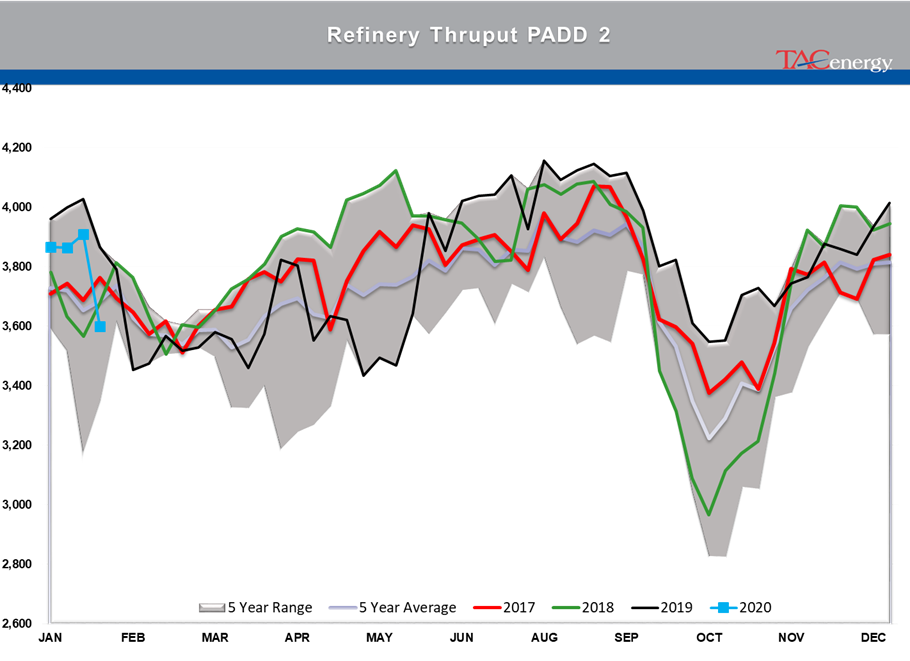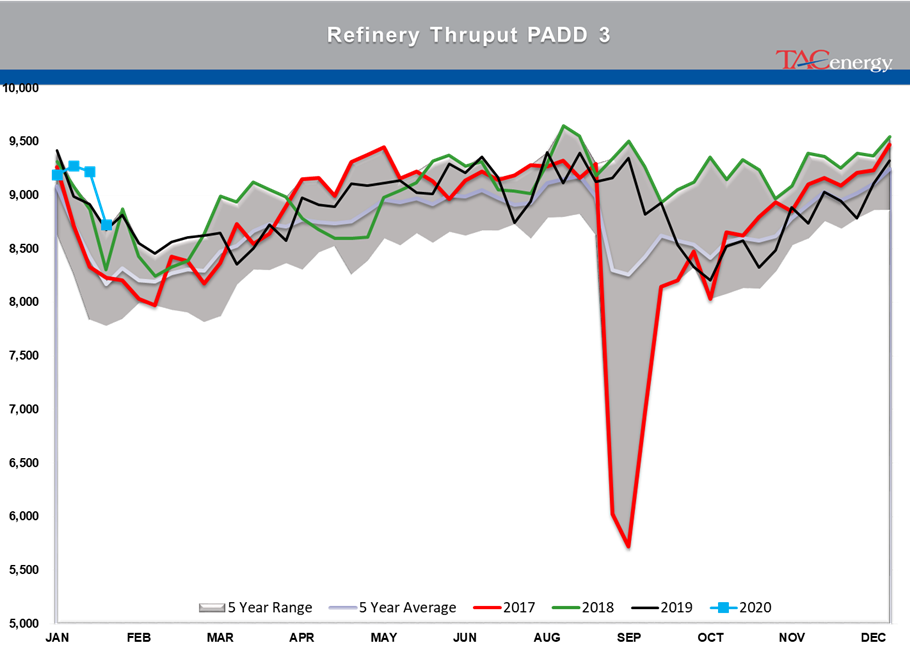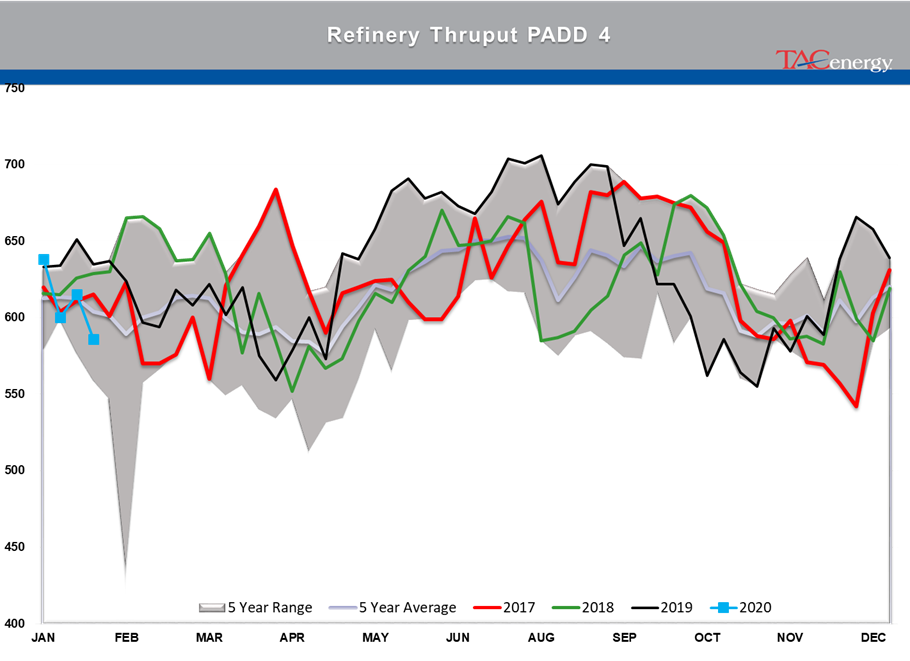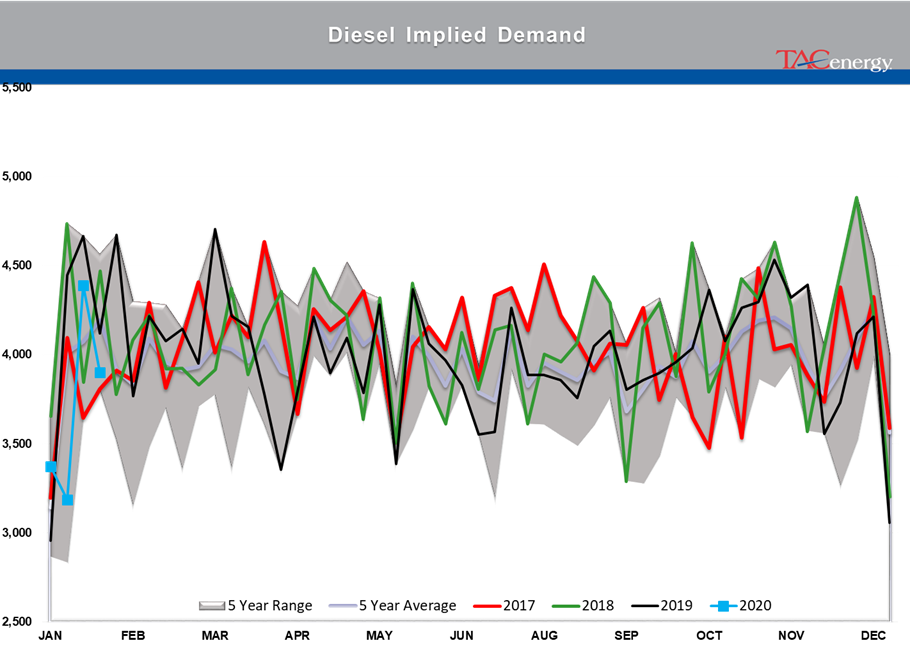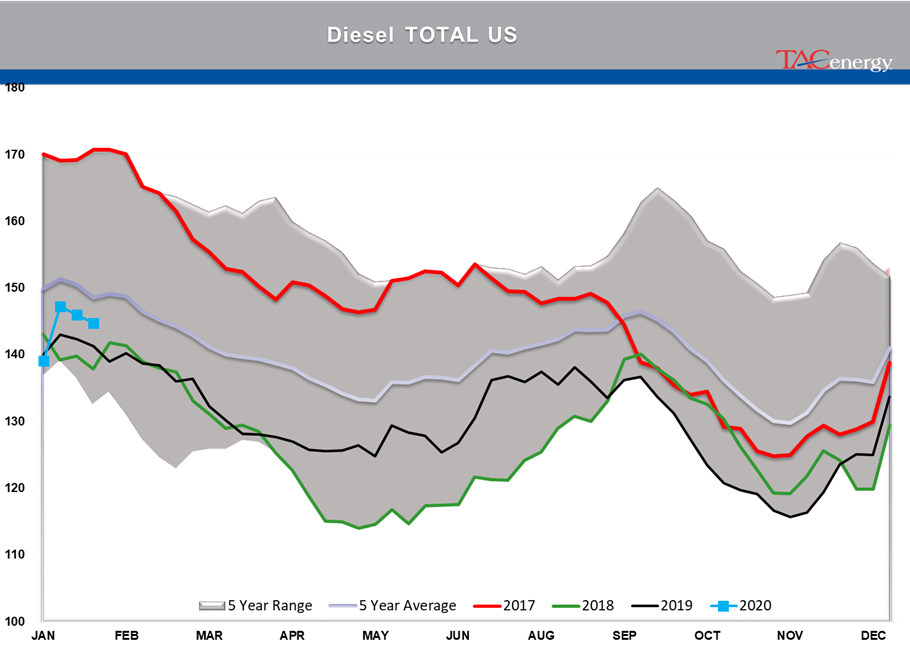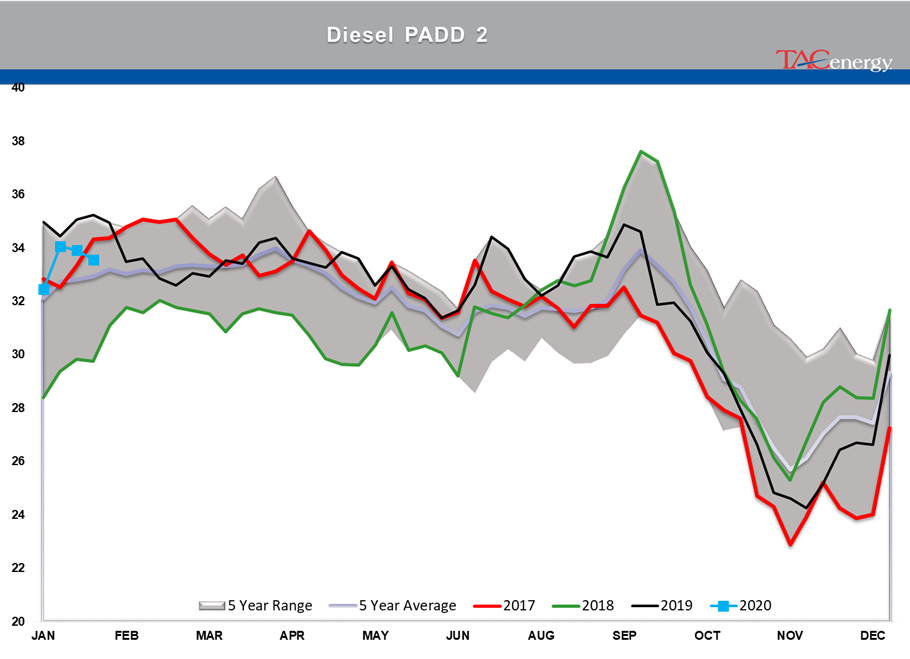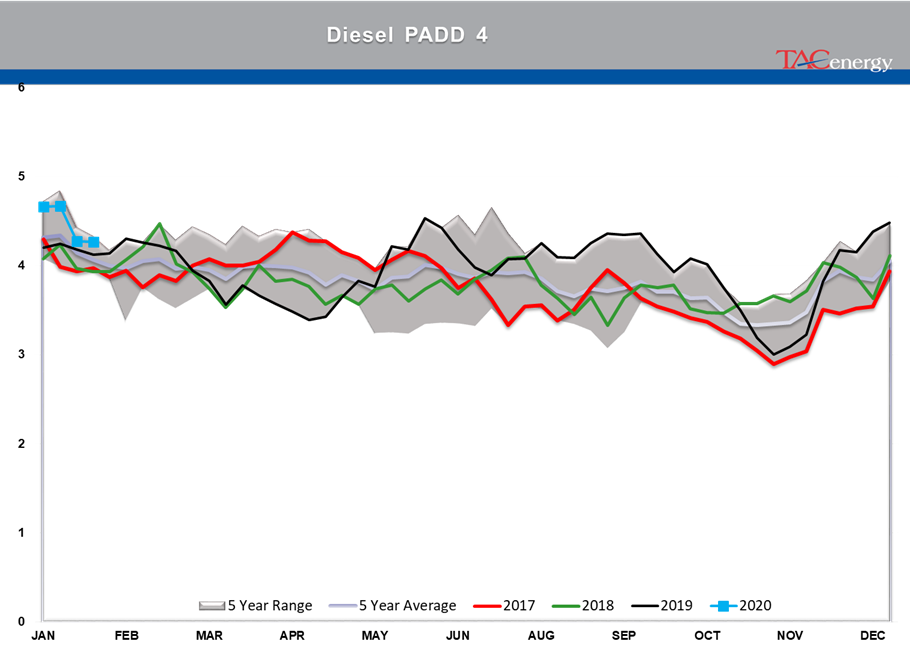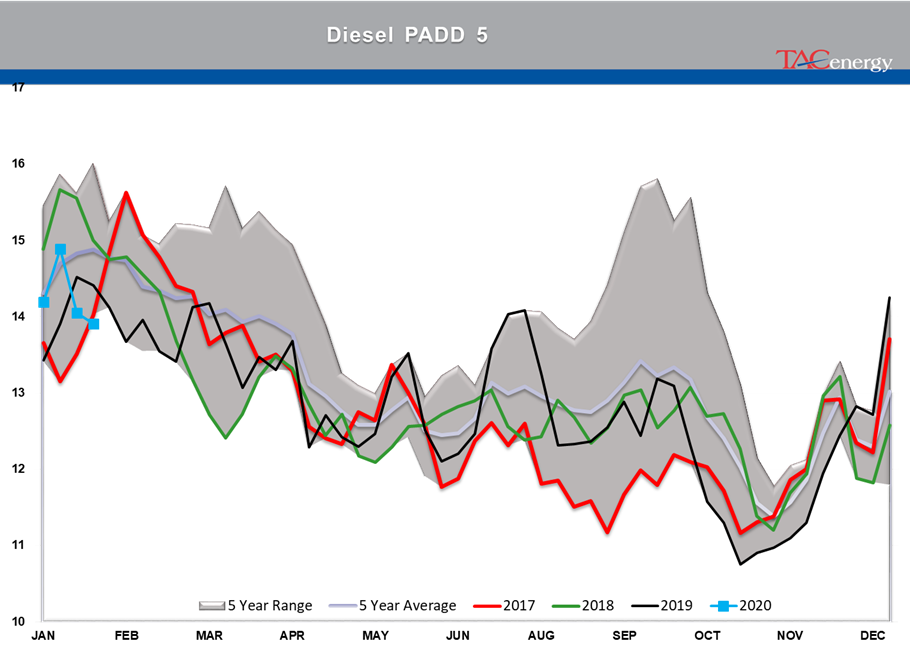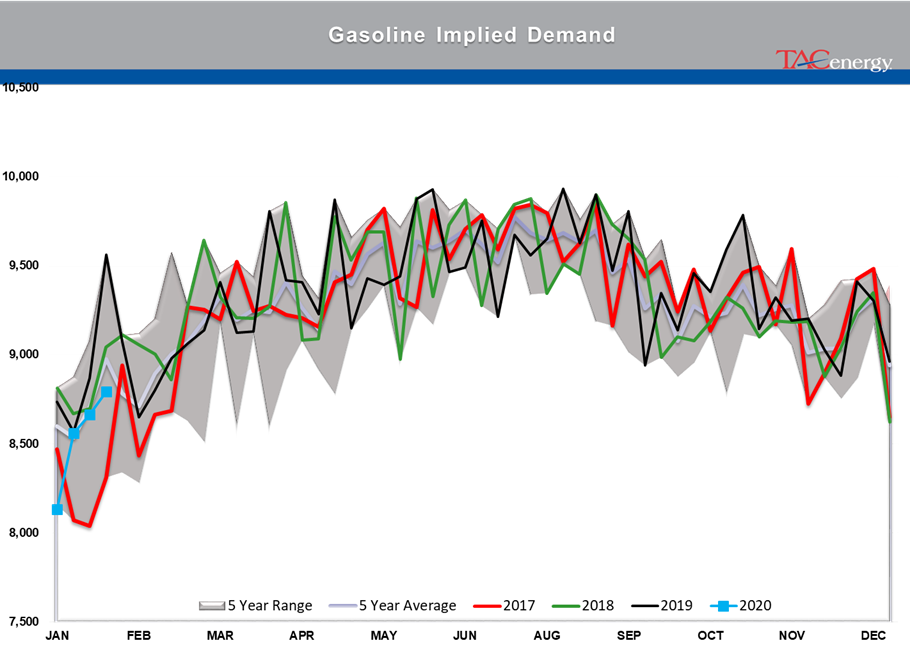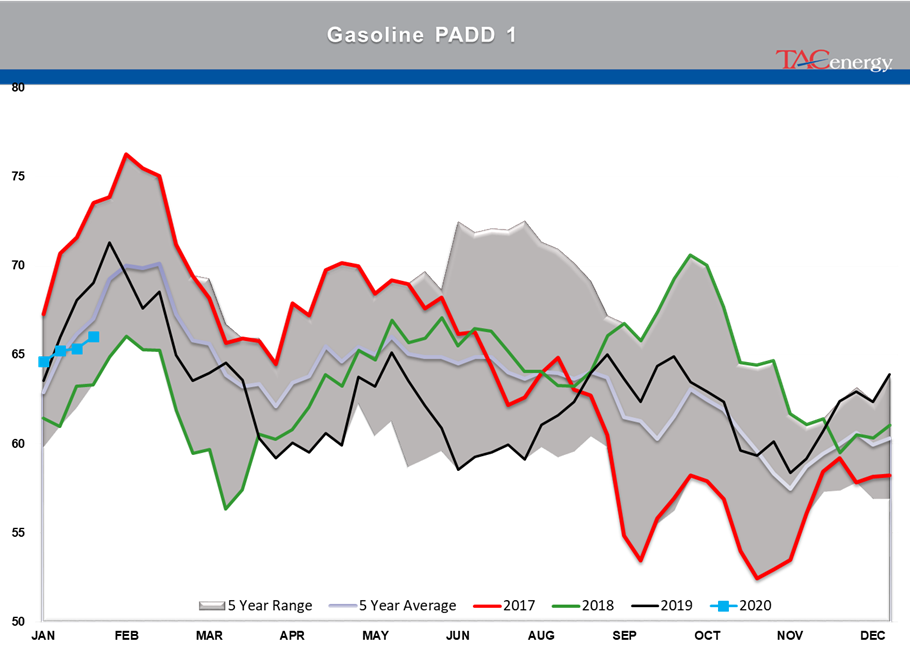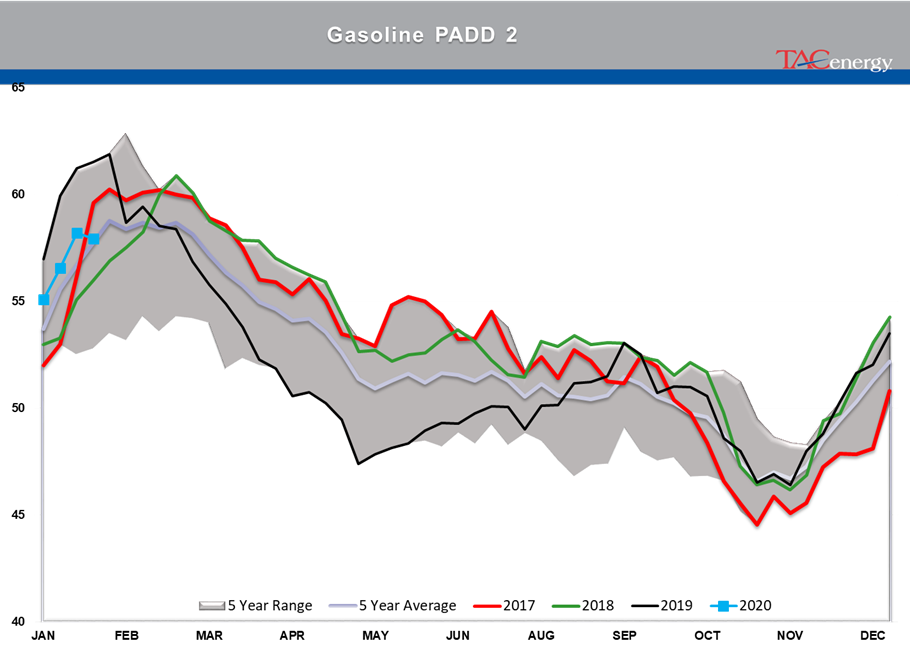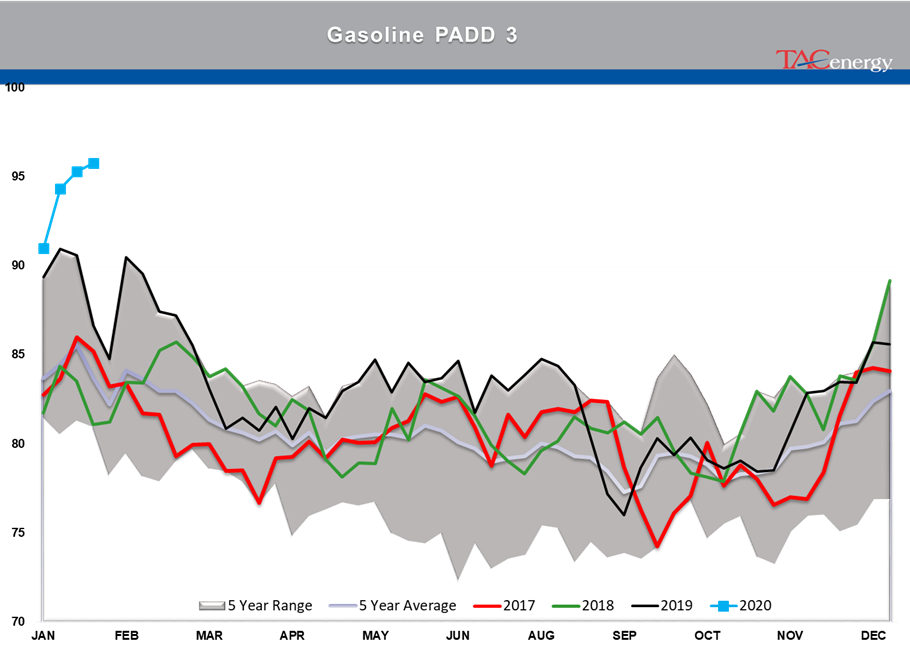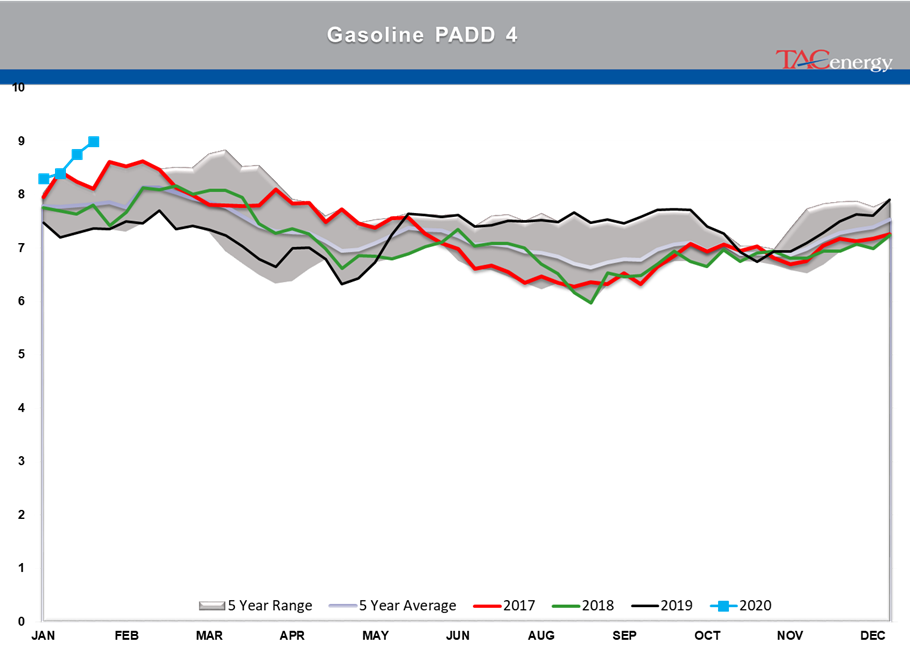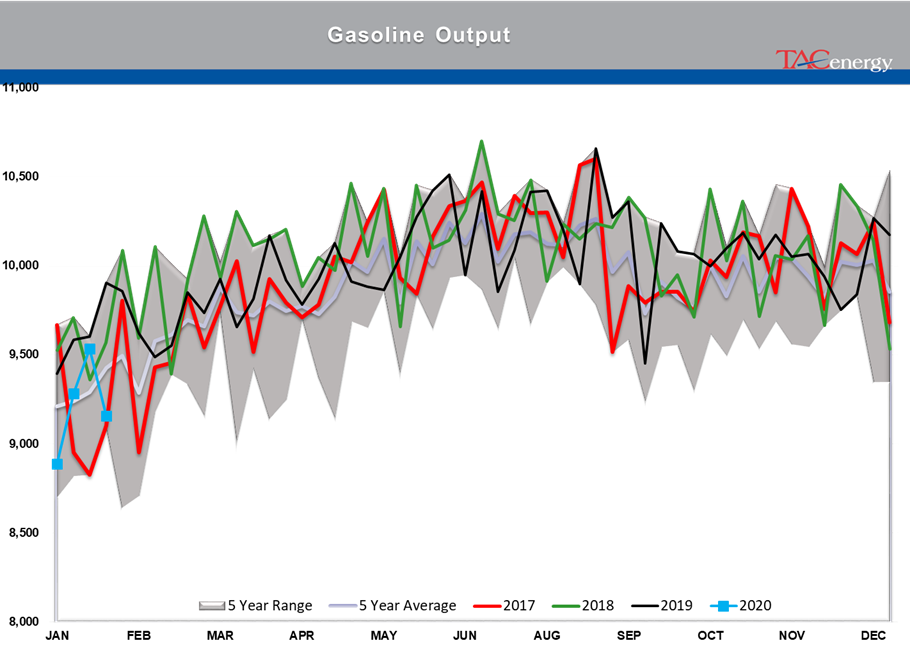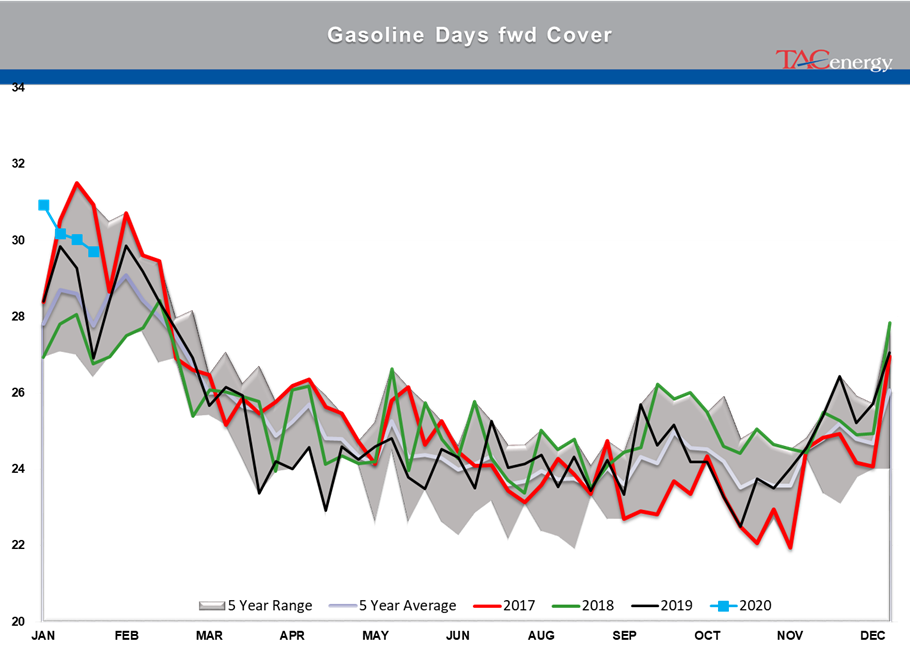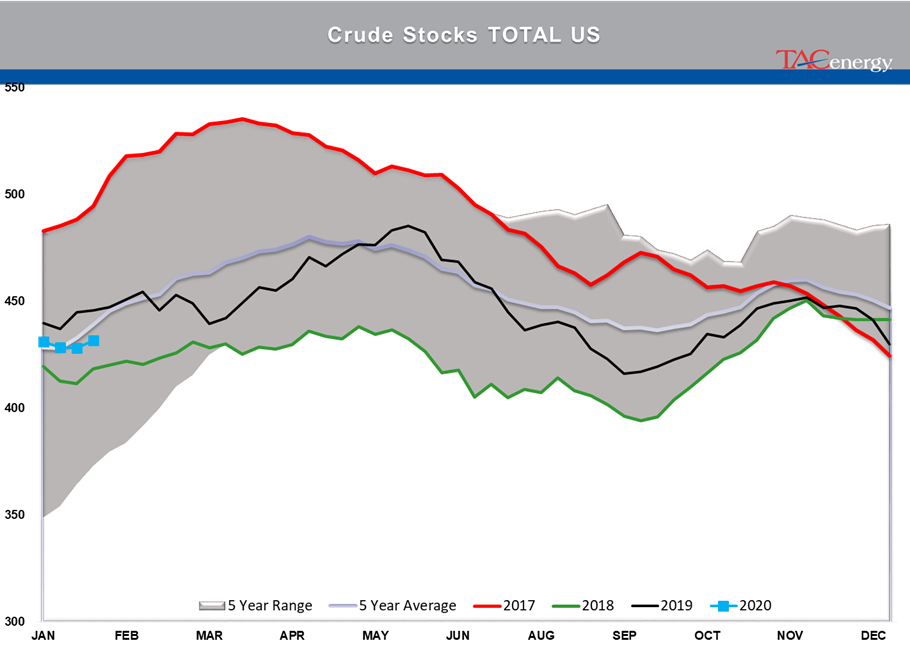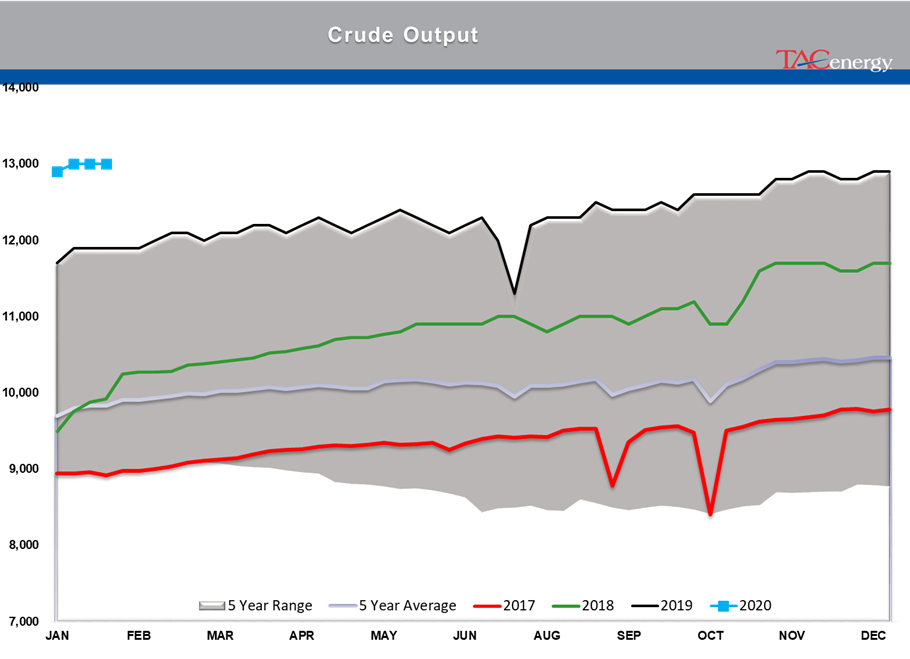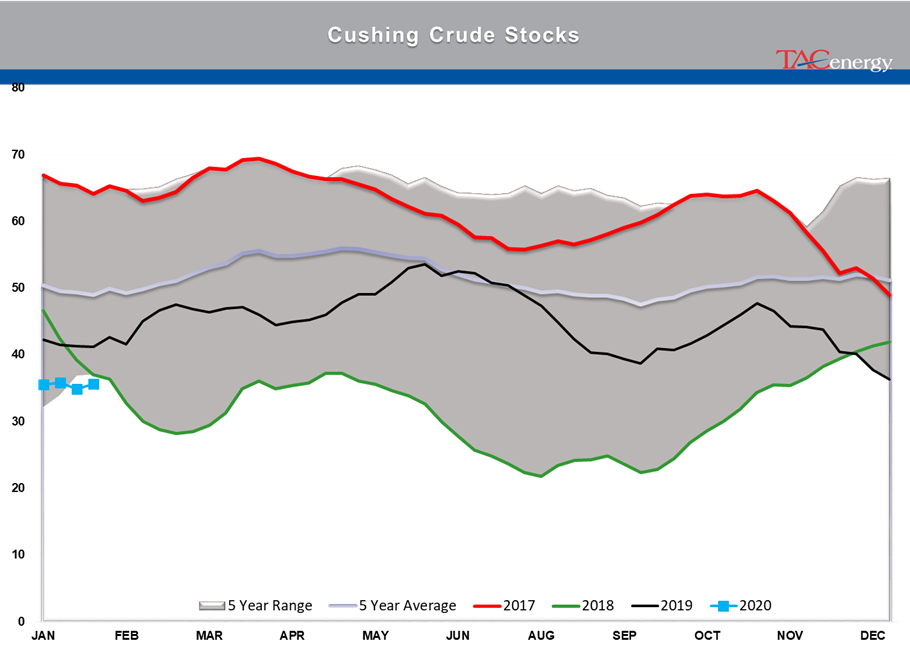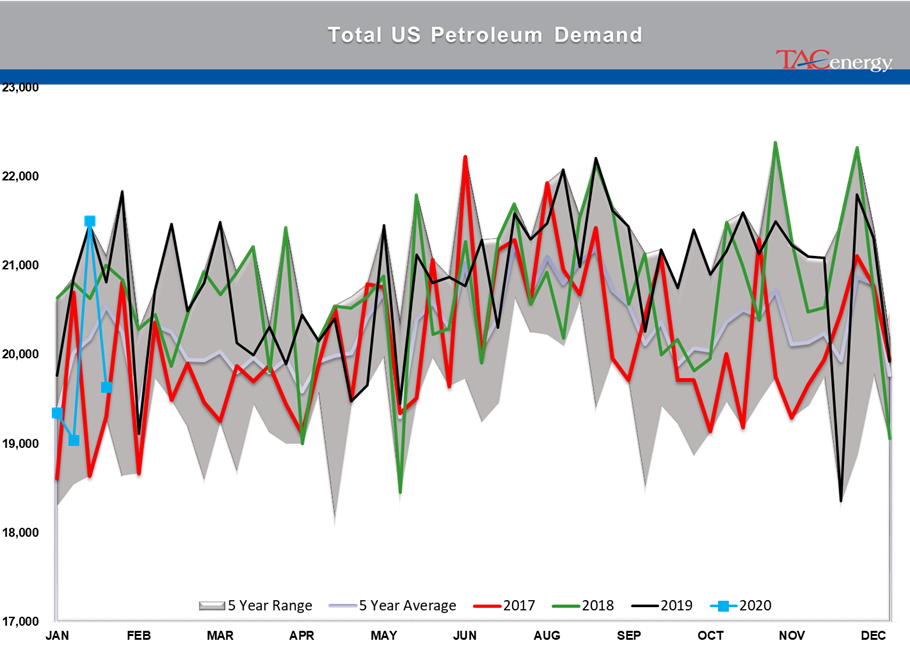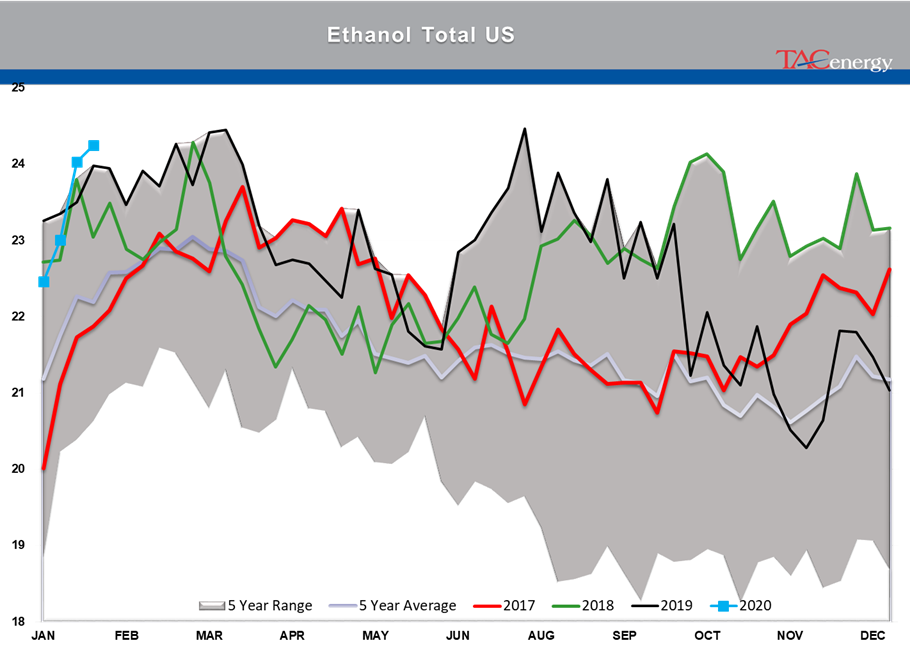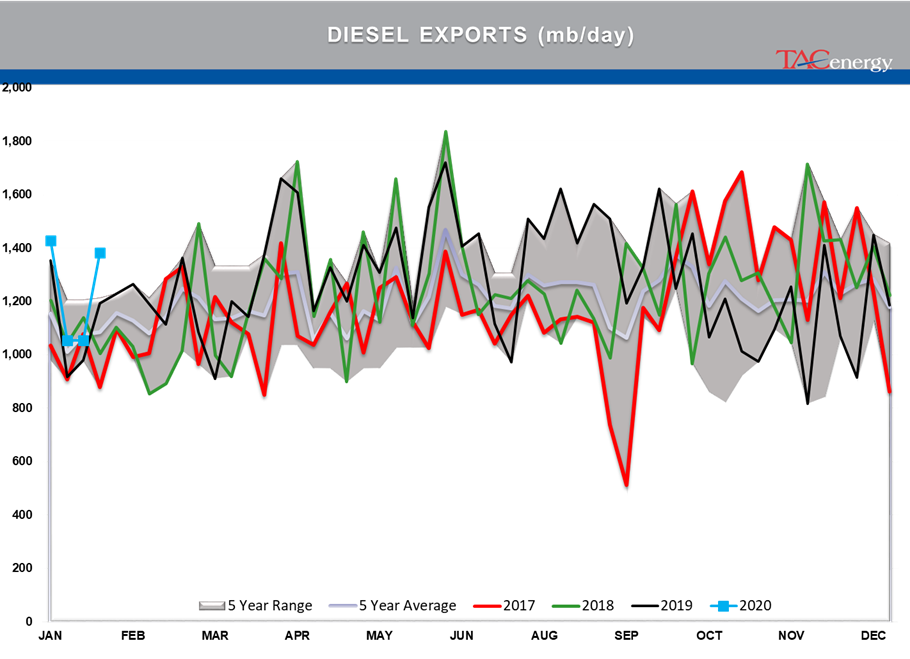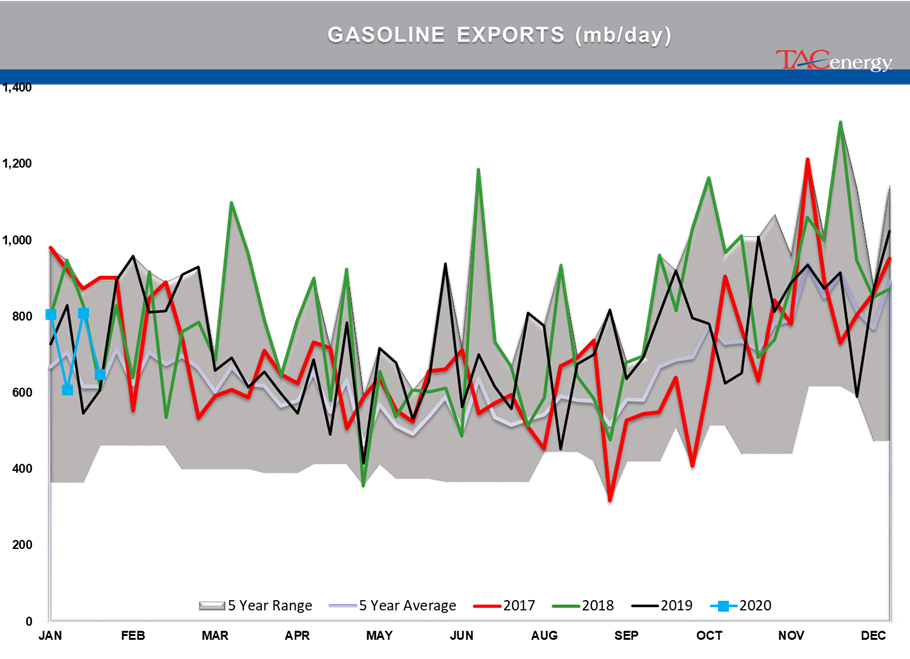Another Fear On/Risk Off Day

It’s another Fear On/Risk Off day for energy and equity markets after the recovery rally ran out of steam Wednesday afternoon. The weekly inventory report from the DOE seemed to matter for about five minutes yesterday, as did the FOMC announcement, and then trading seems to have refocused on the unknowns of the coronavirus.
ULSD prices are leading the move lower again, and are facing an important test on the charts as they hover around one-year lows near $1.65. The last time they traded down to this level at the end of 2018, they rallied 25 cents in under two weeks. That said, there is little other support on the charts, so if prices can break and hold below this level, there could be another 20 cents of downside in short order.
A five percent drop in refinery runs was the most notable figure from the weekly DOE report, with rates dropping in four out of five PADDs. A variety of planned and unplanned maintenance events throughout the country – foreshadowed by strengthening basis values over the past week – help explain the large drop, while discretionary cutbacks due to plunging crack spreads could also be in play. Typical seasonal patterns suggest we should see refinery rates continue to drop for another two to three weeks before starting the annual spring ramp up.
Despite the cut back in refinery throughput, gasoline inventories reached a new record high last week, with the gulf coast glut growing for another week. Inventory levels on the East and West coasts are holding near or below their five year averages for this time of year, but the gulf coast now has nearly five million barrels more inventory than we’ve ever recorded prior to 2020. That excess in the gulf could lead to stronger values for shipping, whether that be over the water or on pipelines, as PADD three suppliers will be challenged to clear that excess ahead of the spring RVP transition.
Click here to download a PDF of today's TACenergy Market Talk.
News & Views
View All
Energy Futures Are Caught Up In Headline Tug-O-War This Morning
Energy futures are caught up in headline tug-o-war this morning with Canadian oil production concerns and a positive US GDP report trying to push prices higher while sinking Chinese demand worries and Gaza ceasefire hopes are applying downward pressure. The latter two seem to be favored more so far this morning with WTI and Brent crude oil futures down ~45 cents per barrel, while gasoline and diesel prices are down about half a cent and two cents, respectively.
No news is good news? Chicago gasoline prices dropped nearly 30 cents yesterday, despite there not being any update on Exxon’s Joliet refinery after further damage was discovered Wednesday. Its tough to say if traders have realized the supply situation isn’t as bad as originally thought or if this historically volatile market is just being itself (aka ‘Chicago being Chicago’).
The rain isn’t letting up along the Texas Gulf Coast today and is forecasted to carry on through the weekend. While much of the greater Houston area is under flood watch, only two refineries are within the (more serious) flood warning area: Marathon’s Galveston Bay and Valero’s Texas City refineries. However, notification that more work is needed at Phillip’s 66 Borger refinery (up in the panhandle) is the only filing we’ve seen come through the TECQ, so far.
Premiums over the tariff on Colonial’s Line 1 (aka linespace value) returned to zero yesterday, and actually traded in the negatives, after its extended run of positive values atypical of this time of year. Line 1’s counterpart, Line 2, which carries distillates from Houston to Greensboro NC, has traded at a discount so far this year, due to the healthy, if not over-, supply of diesel along the eastern seaboard.
Click here to download a PDF of today's TACenergy Market Talk.

WTI And Brent Crude Oil Futures Are Trading ~$1.50 Per Barrel Lower In Pre-Market Trading
The across-the-board drawdown in national energy stockpiles, as reported by the Department of Energy yesterday, stoked bullish sentiment Wednesday and prompt month gasoline, diesel, and crude oil futures published gains on the day. Those gains are being given back this morning.
The surprise rate cut by the People’s Bank of China is being blamed for the selling we are seeing in energy markets this morning. While the interest rate drop in both short- and medium-term loans won’t likely affect energy prices outright, the concern lies in the overall economic health of the world’s second largest economy and crude oil consumer. Prompt month WTI and Brent crude oil futures are trading ~$1.50 per barrel lower in pre-market trading, gasoline and diesel are following suit, shaving off .0400-.0450 per gallon.
Chicagoland RBOB has maintained its 60-cent premium over New York prices through this morning and shows no sign of coming down any time soon. Quite the opposite in fact: the storm damage, which knocked Exxon Mobil’s Joliet refinery offline on 7/15, seems to be more extensive than initially thought, potentially extending the repair time and pushing back the expected return date.
There are three main refineries that feed the Chicago market, the impact from one of them shutting down abruptly can be seen in the charts derived from aforementioned data published by the DOE. Refinery throughput in PADD 2 dropped 183,000 barrels per day, driving gasoline stockpiles in the area down to a new 5-year seasonal low.
While it seems all is quiet on the Atlantic front (for now), America’s Refineryland is forecasted to receive non-stop rain and thunderstorms for the next four days. While it may not be as dramatic as a hurricane, flooding and power outages can shut down refineries, and cities for that matter, all the same, as we learned from Beryl.

